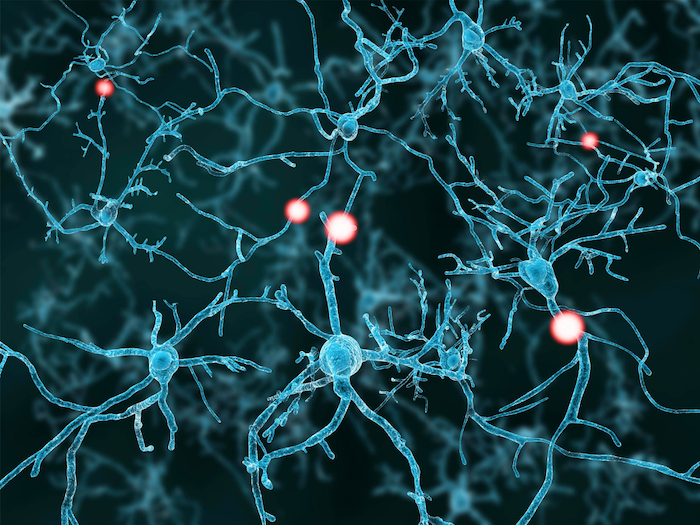GLP-1 Agonists Improve Metabolism, Safety in Youth Obesity
In the ongoing battle against the global obesity epidemic, a particularly vulnerable group has often been overlooked: children and adolescents grappling with obesity. While the adult population has seen promising advancements, especially with the advent of glucagon-like peptide-1 (GLP-1) receptor agonists as therapeutic agents, the pediatric demographic remains largely underserved in terms of robust clinical […]


In the ongoing battle against the global obesity epidemic, a particularly vulnerable group has often been overlooked: children and adolescents grappling with obesity. While the adult population has seen promising advancements, especially with the advent of glucagon-like peptide-1 (GLP-1) receptor agonists as therapeutic agents, the pediatric demographic remains largely underserved in terms of robust clinical data and targeted treatment strategies. A groundbreaking systematic review and meta-analysis recently published in the International Journal of Obesity seeks to bridge this critical gap by rigorously examining the metabolic outcomes and safety profile of GLP-1 receptor agonists in children and adolescents affected by obesity.
GLP-1 receptor agonists have revolutionized adult obesity management through their multifaceted mechanisms that promote weight loss, improve glycemic control, and enhance metabolic health. These agents mimic the incretin hormone GLP-1, which is instrumental in regulating appetite and insulin secretion. By leveraging these pathways, they have attained regulatory approval for use in adults at risk of diabetes or cardiovascular diseases. However, translating these benefits to younger populations necessitates an intricate understanding of developmental physiology, metabolic nuances, and long-term safety – areas that remain underexplored until now.
The meta-analysis meticulously compiled and analyzed data from randomized controlled trials involving pediatric patients treated with GLP-1 receptor agonists. Researchers scrutinized parameters beyond mere weight reduction, encompassing metabolic markers such as insulin sensitivity, lipid profiles, and inflammatory indices, alongside adverse event reporting. This comprehensive approach provides an unprecedented lens through which to assess not just efficacy but also the risk-to-benefit ratio in this sensitive cohort.
What emerged from the synthesis of data was both promising and cautionary. On one hand, GLP-1 receptor agonists demonstrated statistically significant improvements in body mass index (BMI) reduction compared to placebo controls, suggesting that these drugs could become powerful adjuncts to lifestyle modification efforts traditionally emphasized in pediatric obesity management. The degree of weight loss observed aligns with thresholds associated with meaningful cardiometabolic risk reduction, highlighting clinical relevance.
On the other hand, the analysis underscores the heterogeneity of responses influenced by age, baseline metabolic status, and treatment duration. Younger participants showed variable improvement trajectories, indicating that developmental stage may modulate therapeutic outcomes. Furthermore, while the safety profile mirrored that observed in adult populations—common side effects included gastrointestinal disturbances such as nausea and vomiting—the long-term consequences of such interventions in a growing organism remain largely speculative.
Importantly, the meta-analysis also sheds light on the mechanistic underpinnings of GLP-1 receptor agonists in pediatric patients. By acting centrally on hypothalamic appetite regulatory centers and peripherally by slowing gastric emptying, these agents reduce caloric intake and improve satiety. Moreover, improvements in insulin sensitivity contribute to better glucose homeostasis, which is particularly crucial in obese children predisposed to type 2 diabetes mellitus. The study’s authors advocate for integrating these insights into the design of future clinical trials aimed at optimizing dosing strategies and minimizing adverse effects.
This newfound quantitative evidence may catalyze a paradigm shift in pediatric obesity therapeutics, challenging prevailing hesitations about using pharmacological agents in children. Given the escalating rates of severe obesity and its associated comorbidities in youth worldwide, expanding the therapeutic arsenal beyond lifestyle interventions and bariatric surgery is imperative. The meta-analysis herein offers a data-driven foundation to inform clinical decision-making and policy formulation.
Concurrently, ethical considerations loom large. The deployment of GLP-1 receptor agonists in a pediatric population necessitates vigilant post-marketing surveillance and longitudinal studies to monitor potential impacts on growth, neurodevelopment, and psychological wellbeing. The authors call for interdisciplinary collaboration among endocrinologists, pediatricians, pharmacologists, and bioethicists to navigate these complexities thoughtfully.
Another compelling aspect highlighted is the disparity in treatment accessibility and the need to address socioeconomic determinants of health that exacerbate childhood obesity. Pharmacological advances cannot operate in isolation but must be integrated within comprehensive, equitable healthcare frameworks that prioritize prevention alongside intervention.
The meta-analysis also identifies gaps warranting further investigation, such as optimal treatment duration, the synergistic effects of combining GLP-1 receptor agonists with behavioral therapies, and potential genetic or epigenetic factors influencing individual responses. The dynamic interplay between pharmacotherapy and the pediatric metabolic milieu presents fertile ground for innovative research trajectories.
In a broader scientific context, this study enriches the understanding of incretin biology’s role across the lifespan, signaling potential applications in other pediatric metabolic disorders. The refinement of GLP-1 receptor agonists with improved efficacy and tolerability profiles could herald a new epoch in precision medicine tailored to younger patients.
Public health implications are equally profound. Childhood obesity predisposes individuals to a continuum of chronic diseases, imposing a substantial burden on healthcare systems globally. Strategies informed by rigorous meta-analytic evidence empower clinicians to intervene more effectively, potentially altering life-course trajectories toward healthier outcomes.
As the medical community digests these findings, there remains a palpable sense of cautious optimism. The promise of GLP-1 receptor agonists in addressing a pressing clinical challenge for which few effective treatments exist represents a beacon of hope. However, the balance between therapeutic innovation and safeguarding the wellbeing of a developing population remains delicate.
In sum, this systematic review and meta-analysis propel the field forward by providing the most precise estimates yet of GLP-1 receptor agonists’ impact on pediatric obesity and its metabolic sequelae. It lays a robust groundwork upon which future clinical research, regulatory discussions, and clinical practice guidelines can be built, steering a course toward more effective and safer interventions for children battling obesity.
This pivotal work by Sedenho-Prado and colleagues marks a significant stride in confronting an urgent global health concern. It underscores the imperative to extend scientific rigor and clinical innovation into pediatric obesity treatment paradigms and stands as a clarion call for sustained research investment and thoughtful clinical application.
With obesity-related complications manifesting increasingly in youth, the integration of GLP-1 receptor agonists into pediatric care settings, supported by this meta-analytic evidence, could transform outcomes and inspire hope in families and healthcare providers alike who strive for healthier futures.
As the field evolves, ongoing evaluation of safety, effectiveness, and real-world application will be essential to optimizing the role of GLP-1 receptor agonists within a holistic approach to pediatric metabolic health, ensuring that advances are translated into tangible, lasting benefits.
Subject of Research: Metabolic outcomes and safety of GLP-1 receptor agonists in children and adolescents with obesity
Article Title: Metabolic outcomes and safety of GLP-1 receptor agonists in children and adolescents with obesity: A systematic review and meta-analysis
Article References:
Sedenho-Prado, L.G., Yugar, L.B.T., Whitaker, A.R. et al. Metabolic outcomes and safety of GLP-1 receptor agonists in children and adolescents with obesity: A systematic review and meta-analysis. Int J Obes (2025). https://doi.org/10.1038/s41366-025-01790-w
Image Credits: AI Generated
DOI: https://doi.org/10.1038/s41366-025-01790-w
Tags: advancements in childhood obesity treatmentclinical trials for pediatric obesityGLP-1 receptor agonistsglucagon-like peptide-1 therapyinsulin regulation in childrenlong-term effects of GLP-1metabolic outcomes in childrenobesity epidemic in youthpediatric obesity managementsafety of GLP-1 in adolescentssystematic review on obesity therapiesyouth obesity treatment
What's Your Reaction?

































